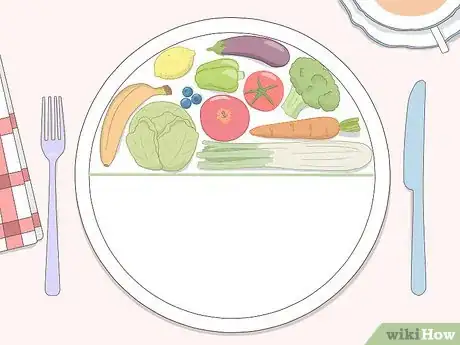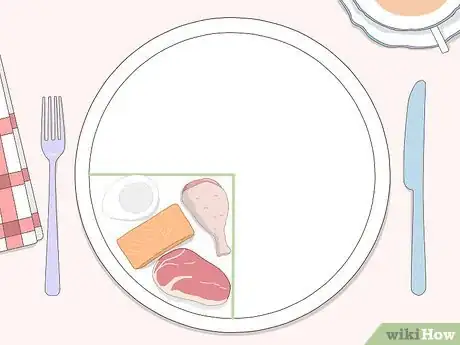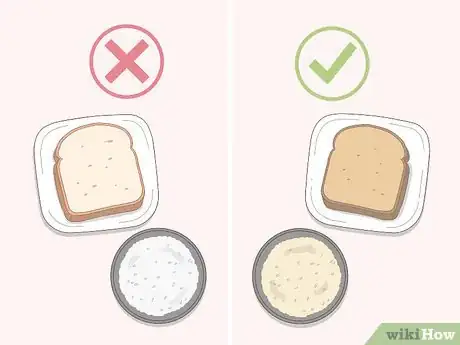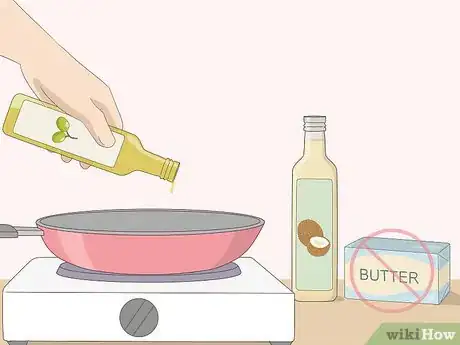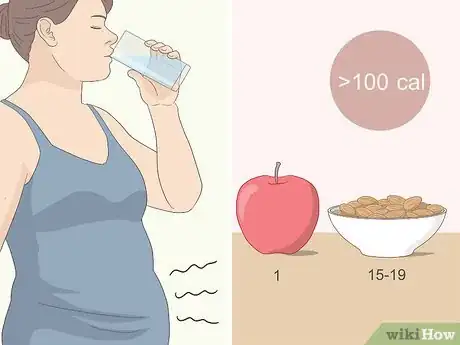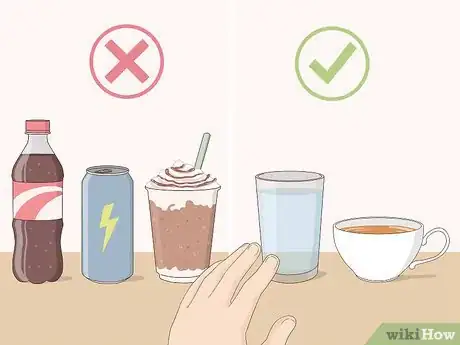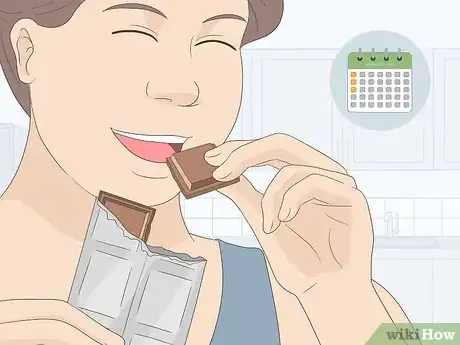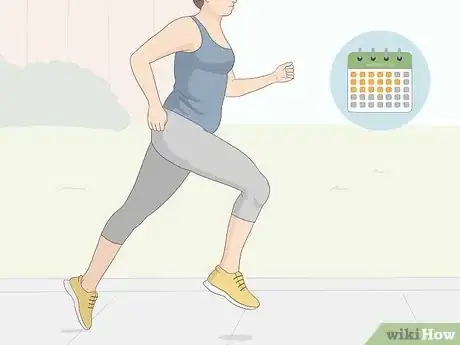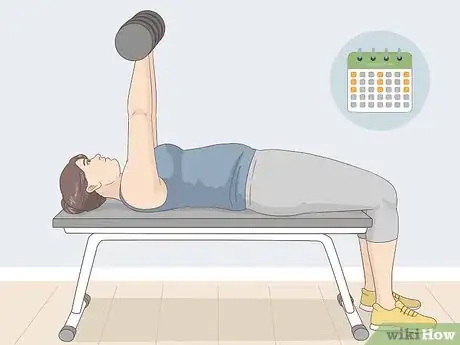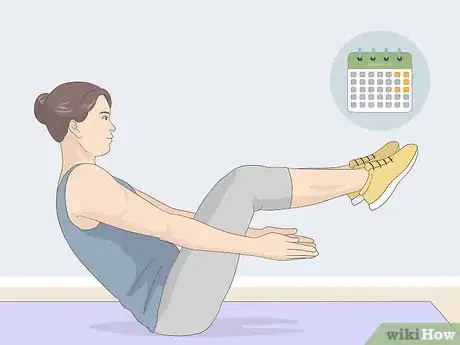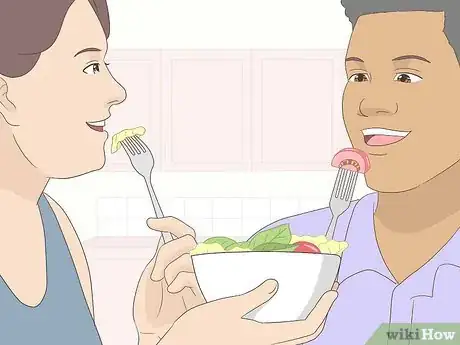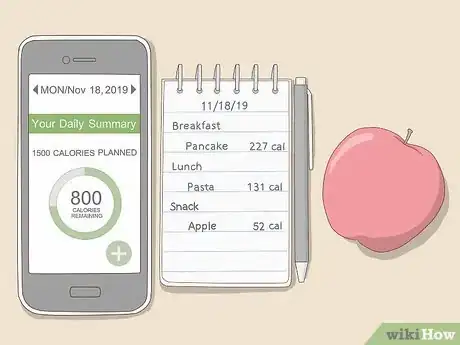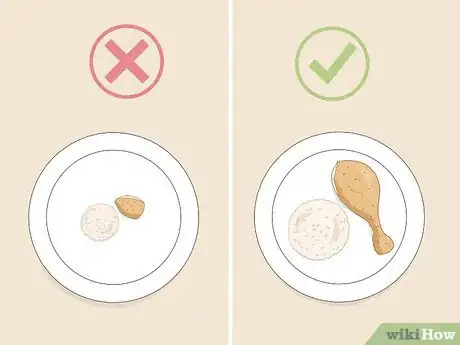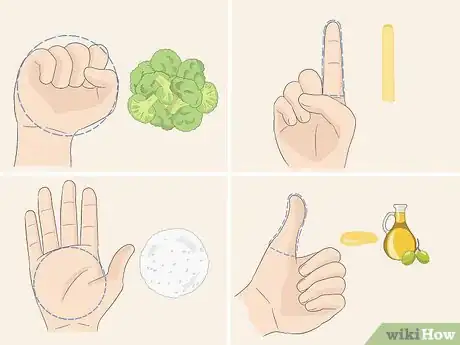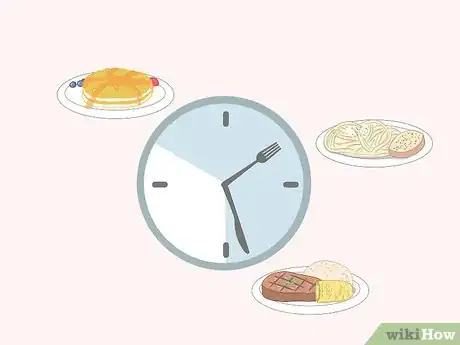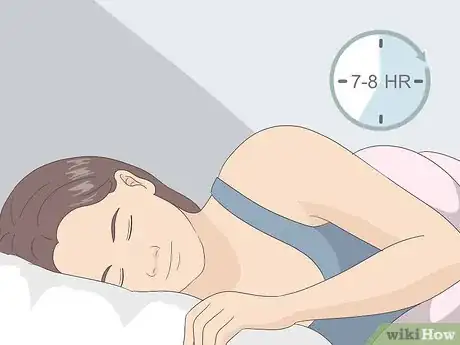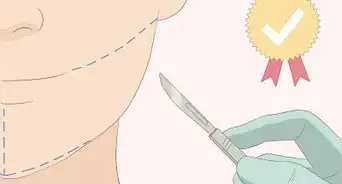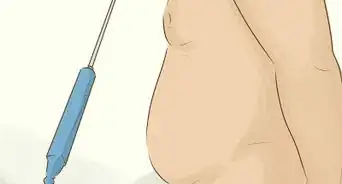This article was co-authored by Pouya Shafipour, MD, MS. Dr. Pouya Shafipour is a Family Medicine Specialist, Primary Care Physician, and a Weight Loss Specialist based in Santa Monica, California. Dr. Shafipour specializes in dietary, nutritional, behavioral, and exercise counseling to manage obesity and medical conditions related to excessive weight gain or loss. Dr. Shafipour received a BS in Molecular and Cell Biology from the University of California, Berkeley, an MS in Physiology and Biophysics from Georgetown University, and an MD from the Loma Linda University School of Medicine. He completed his internship in general surgery at UC Irvine and a residency in family medicine at the University of California, Los Angeles, and became board certified in family medicine in 2008.
There are 24 references cited in this article, which can be found at the bottom of the page.
wikiHow marks an article as reader-approved once it receives enough positive feedback. In this case, 90% of readers who voted found the article helpful, earning it our reader-approved status.
This article has been viewed 567,255 times.
Losing 15 pounds in 3 weeks is going to require some serious dedication and calorie-cutting, but don’t worry—it is possible! However, it’s not exactly the healthiest goal to set for yourself because losing weight too quickly isn’t sustainable and any pounds you lose will be due to decreased water weight and muscle (not fat).[1] Losing 1 to 2 pounds a week is a healthier, more sustainable option—and it still requires a dedicated effort of eating around 1,000 fewer calories per day. Regardless of your weight loss goals, watching what and how much you eat, burning more calories, and making a few changes to your lifestyle will help you slim down in a healthy way!
Steps
Eating Fewer Calories
-
1Add your favorite vegetables to every meal. Vegetables are relatively low in calories and contain lots of vitamins, antioxidants, and fiber to keep you healthy and satisfied. Try to eat around 2 to 3 cups of vegetables per day. Go to https://www.choosemyplate.gov/vegetables to see the 1 cup value of different types of cooked and raw vegetables.[2] Try to eat all kinds of colors to get a wide variety of nutrients!
- Start your meals with vegetables and greens before moving onto more calorically dense foods like proteins and carbohydrates. That way, you’ll feel fuller on fewer calories.
-
2Eat lean protein to build lean muscle. Increasing lean muscle mass can lead to burning more calories throughout the day.[3] Sources of lean protein include fish, poultry, beans and lentils, and egg whites. Dedicate 15% to 20% of your daily calorie intake to lean proteins.[4]
- Some red meats are lean because they've had the fat removed. Look for these at the grocery store.
- Non-meat sources of protein that support muscle growth your muscles are tofu, tempeh, and seitan. You can also add protein powders to smoothies or drinks in order to ensure you get enough protein in your diet as a vegan or vegetarian.
Advertisement -
3Reduce your intake of carbohydrates and choose fibrous whole grains. Swap refined white carbs (like white bread and rice) for whole-grain varieties (like whole-grain wheat bread and brown rice). Whole-grain carbohydrates also contain fiber that will keep you feeling fuller longer.[5]
- It’s recommended to eat 300 grams of carbohydrates per day for a 2,000 calorie diet (45% to 65% of your total caloric intake), but to lose more weight in less time, cut it down to around 50 to 150 grams per day.
- In the coming weeks, substitute sandwich breads with lettuce wraps]] and pastas with zucchini noodles or spaghetti squash to lower your carbohydrate intake.
-
4Choose healthy monounsaturated fats like coconut and olive oil. For the next 3 weeks, you’ll need to feel satiated from eating fewer calories, so don’t shy away from fats! Fats tell your brain that you’re full and they also contain omega 3 fatty acids that help your body burn fat. Just make sure you’re eating healthy fats—Instead of cooking with butter and lard, choose healthy options like coconut or olive oil.[6]
- Healthy fats like avocado, olive oil, flax seeds, chia seeds, nuts, and nut butters all have omega 3 fatty acids.
- Since fats are not low in calories, limit your intake to 2 tablespoons (6.0 tsp) of oil or nut butter a day (about 2 servings).
-
5Snack only when you’re hungry and stick to whole foods. Snacks will keep your energy up and your metabolism running high for the next 3 weeks. If you’re not sure if you’re hungry, drink 8 fluid ounces (240 mL) of water and wait 5 minutes to see if you feel more energized. Choose fresh fruits and nuts over sugary snack bars, trans-fatty chips, or carb-heavy crackers. Try to keep your snacks below 100 calories which is equal to:[7]
- 1 piece of fruit (large apple, banana, or 2 small oranges)
- 15-19 whole almonds
- 13-14 whole cashews
- 10 pecan halves
- 28 shelled pistachios
-
6Hydrate with low-calorie beverages. Cut out sodas, energy drinks, and blended beverages that are high in calories and sugar. Stick to water, tea, and black coffee (without added milk, cream, or sugar) to avoid empty calories.[8]
- Calories from alcohol count! Try not to drink at all while you’re trying to lose weight.[9] If you are going to drink, stick to low-calorie options like light beer, spirits on the rocks, or wine. And remember to drink in moderation—that means one drink per day for women and two drinks for men.[10]
- Coffee has been shown to boost your metabolism, so feel free to sip on black coffee in the mornings or before workouts to power you up. Just don’t go over 4 cups a day (400mg of caffeine) to avoid the risk of anxiety, insomnia, and digestive issues.[11]
-
7Decrease your sodium intake for the next 3 weeks. Sodium causes your body to retain water, which leaves you looking bloated and holding onto excess water weight. So avoid adding salt to your meals for the next 3 weeks and steer clear of hidden sources of sodium. Use other spices, like chili pepper, cumin and garlic to flavor your food.[12]
- Frozen meals (even “healthy” ones), snack foods, soups, and condiments all have lots of sodium. Eat around 1,500 milligrams (1.5 g) of sodium per day and be sure to check nutrition labels!
-
8Allow yourself to indulge once a week or less and exercise portion control. While it may seem that you have to give up dessert entirely to lose 5 pounds for the next 3 weeks, doing so will leave you feeling deprived (and more likely to binge eat on sweets). Indulge wisely a maximum of once per week by eating very small portions of low-calorie sweets.[13]
- Enjoy a square of dark chocolate (at least 70% cocoa) once a week (maximum) for a boost of antioxidants and healthy minerals.
- Satisfy your sugar craving with frozen fruit (like blueberries or bananas) instead of cake, cookies, or pie. You can even make banana ice cream that is far healthier than regular ice cream. Plus, you’ll get some extra fiber!
Burning More Calories
-
1Do at least 15-30 minutes of aerobic exercise 5 or 6 days a week. Go for a jog, run, bike ride, or briskly walk to burn extra calories each day. While what you eat matters more than what you burn, exercise will boost your metabolism to keep your body in calorie-burning mode.[14]
- Alternate between low-intensity (fat burning) exercise and vigorous exercise from day to day. For example: running on Monday, long-distance jogging on Tuesday, high-intensity aerobics on Wednesday, and so on.
- Do high-intensity interval training (HIIT) to blast more calories in less time. For instance, when you’re jogging, do a 60 second sprint every 3 to 5 minutes.
-
2Lift weights 3 times a week to|build lean muscle. Lifting weights will help you build lean muscle, increasing your metabolic rate. And by the end of the three weeks, all that lean muscle will have you feeling fit and looking toned.[15]
- Choose lighter weights and do more reps if you don’t want to bulk up (adding muscle weight).
- Train your arms and legs on alternating days. For example: train your lower body on Mondays, your upper body and core on Tuesdays, and rest on Wednesdays before training your lower body again on Thursdays.
- You can also do both upper and lower body strength training on Mondays, Wednesdays, and Fridays (resting on Tuesdays and Thursdays).
-
3Incorporate movement into your daily routine for the next 3 weeks. Bike or walk on your commute to work. If you cannot replace the entire commute, park further away and walk. Incorporate 15 minutes of biking or 30 minutes of walking into both morning and evening commutes. Don’t count this towards your daily minimum of 45 minutes per day for the next 3 weeks.
- Take the stairs instead of the elevator or escalator.
- Stand up when working on your computer instead of sitting.
- Do crunches while watching TV or waiting for dinner to cook.
-
4Give yourself 1 or 2 active rest days. Since you’re planning to drop 5 pounds per week, only allow yourself 1 or 2 rest days per week and still do some sort of movement on that day for 15 to 30 minutes (like walking, light swimming, yoga, pilates, stretching, and/or moderate aerobics).[16]
- Take a long walk outside (choose a path with hills if you can) or follow a 30-minute online yoga]routine.
-
5Exercise with friends or take a class to make exercise more fun. Look up your local gym or fitness center to find out what kind of classes they offer in the next 3 weeks. Try boot camp, barre method, power yoga, aerobics, or muscle pump classes. Ask a friend to join you for some of the classes to keep you accountable and make it more fun.
- Classes vary from 30 minutes to 1 hour (depending on the intensity and the gym). Many classes include both strength training and cardio intervals, so count those toward your daily exercise goals.
Making Lifestyle Changes
-
1Get your family and/or roommates on board. It will be difficult to cut calories when the people you live with don’t share your same weight loss goals. Encouraging your family to eat healthy and be active with you will set you up for success.[17]
- If the people you live with aren’t on board, set some boundaries (like not keeping junk food in the house) and plan your own meals regardless of what they’ve planned to eat.
-
2Use a food diary app to help you keep track of your daily caloric intake. Journaling and keeping a food diary is an effective way for you to see exactly how many calories you’ve eaten. It will keep you accountable and make you less prone to mindless eating in the coming weeks. Use a phone app or carry a small journal with you so you can log intake while you’re on the go.[18]
- My Fitness Pal’s “Free Calorie Counter” is a good phone app to try.
- Shopwell is a free app that helps you make better choices when you’re buying groceries by tailoring your shopping list to your fitness and weight loss goals.[19]
-
3Pay attention to your food when you eat for the next 3 weeks. Mindful eating will help you slow down at meals, making you feel more satisfied and less likely to overeat. Slow down, chew your food thoroughly, and pay attention to the textures and flavors on your tongue.[20]
- Remove all distractions when you’re sitting down to a meal; turn off your phone, TV, computer, and/or radio.
- Put your fork down every three bites or so and sip on water to help you slow down and ease digestion.
-
4Don’t cut too many calories to ensure you’re getting all of your nutrients. Eating fewer calories means you’re taking in fewer nutrients, so don’t overdo it.[21] For the next 3 weeks, avoid eating less than 1,200 calories per day (for women) and 1,500 calories per day (for men) to stay healthy.[22]
- Cutting too many calories can lead to malnutrition. It also makes you feel deprived, which can cause irritability and increase the chance that you’ll overeat at your next meal.
-
5Watch your portion sizes for the next 3 weeks. Eating smaller portion sizes is essential for weight loss. Whether you’re cooking at home or eating at a restaurant, be conscientious of how much food you’re actually eating. When dining out, ask for half of your entree to be boxed up to go (or you can bring your own Tupperware). Measure proper portion sizes using your hand:[23]
- Cooked vegetables, dry cereal, chopped or whole fruit: 1 fist = 1 cup (16 US tbsp)
- Cheese: 1 index finger = 1.5 ounces (43 g)
- Noodles, rice, oatmeal: 1 palm = 0.5 cups (8.0 US tbsp)
- Proteins: 1 palm = 3 ounces (85 g)
- Fats: 1 thumb = 1 tablespoon (3.0 tsp)
-
6Practice intermittent fasting a few days a week. This type of fasting can help you eat fewer calories, lose fat, and—as a plus—lower your cholesterol. Give yourself an eating window of 8 hours and practice intermittent fasting anywhere from 1 to 4 days a week.[24]
- For instance, only eat between 10:00 AM and 6:00 PM or 11:00 AM and 7:00 PM. Pay attention to how you feel during and after intermittent fasting and adjust the time window and frequency to suit your schedule.
- Keep in mind that skipping meals can send your body into starvation mode, causing it to hold onto fat and burn fewer calories. So when practicing intermittent fasting, eat 4 or 5 mini-meals within your eating window.[25]
-
7Drink plenty of water to prevent bloating and dehydration. Increasing your water consumption when you are working out is essential to stay hydrated. Dehydration causes your body to retain water, so while it may sound backward, you have to drink more water to retain less. Water will also help flush excess salt out of your body, making you less bloated.[26]
- Drink half of your weight in ounces per day. For example, if you weigh 200 pounds (91 kg), drink 100 fluid ounces (3,000 mL) per day.
-
8Aim to get 7 to 8 hours of sleep a night. Not getting enough sleep can negatively affect your metabolism and your stress hormones, causing your body to hold onto more calories. Plus, you’re more likely to crave fatty, sugary foods when you’re sleep-deprived. If you have trouble falling asleep, try to relax before bedtime by:[27]
- Listening to calming instrumental music
- Avoiding your phone or TV for an hour before bed
- Drinking calming tea (like lavender, chamomile, or ginger)
- Doing some deep, meditative breathing
Warnings
- Stop exercising if you feel pain, shortness of breath, or dizziness.⧼thumbs_response⧽
- Talk to your doctor before starting any new diet or fitness program.[28]⧼thumbs_response⧽
References
- ↑ https://www.independent.co.uk/life-style/health-and-families/weight-loss-quick-why-not-healthy-good-workout-fad-diets-a8042321.html
- ↑ https://www.choosemyplate.gov/vegetables
- ↑ Pouya Shafipour, MD, MS. Board Certified Family Medicine Specialist. Expert Interview. 8 May 2020.
- ↑ https://www.health.harvard.edu/blog/how-much-protein-do-you-need-every-day-201506188096
- ↑ https://www.nap.edu/read/10490/chapter/9
- ↑ https://www.health.harvard.edu/staying-healthy/the-truth-about-fats-bad-and-good
- ↑ https://www.thekitchn.com/a-visual-guide-to-100-calories-of-nuts-snack-tips-from-the-kitchn-201778
- ↑ https://www.hsph.harvard.edu/nutritionsource/healthy-drinks/sugary-drinks/
- ↑ Pouya Shafipour, MD, MS. Board Certified Family Medicine Specialist. Expert Interview. 8 May 2020.
- ↑ https://www.cdc.gov/alcohol/faqs.htm
- ↑ https://www.ncbi.nlm.nih.gov/pubmed/7369170
- ↑ https://www.hsph.harvard.edu/nutritionsource/salt-and-sodium/
- ↑ http://healthland.time.com/2012/06/25/treat-yourself-eating-dessert-at-breakfast-can-aid-weight-loss/
- ↑ Pouya Shafipour, MD, MS. Board Certified Family Medicine Specialist. Expert Interview. 8 May 2020.
- ↑ https://www.ncbi.nlm.nih.gov/pmc/articles/PMC3544497/
- ↑ https://www.self.com/story/best-activities-for-active-recovery-day
- ↑ https://www.ncbi.nlm.nih.gov/pmc/articles/PMC4435839/
- ↑ https://www.ncbi.nlm.nih.gov/pmc/articles/PMC3268700/
- ↑ https://wa-health.kaiserpermanente.org/best-diet-apps/
- ↑ https://www.health.harvard.edu/staying-healthy/mindful-eating
- ↑ Pouya Shafipour, MD, MS. Board Certified Family Medicine Specialist. Expert Interview. 8 May 2020.
- ↑ https://www.health.harvard.edu/staying-healthy/calorie-counting-made-easy
- ↑ https://www.healthyeating.org/Portals/0/Documents/Tip%20Sheets/Portion_Serving_Size_Chart_Eng.pdf?ver=2016-09-15-112633-477
- ↑ https://www.health.harvard.edu/blog/intermittent-fasting-surprising-update-2018062914156
- ↑ https://news.osu.edu/in-study-skipping-meals-is-linked-to-abdominal-weight-gain/
- ↑ https://www.ncbi.nlm.nih.gov/pmc/articles/PMC4991532/
- ↑ https://www.ncbi.nlm.nih.gov/pmc/articles/PMC2951287/
- ↑ Pouya Shafipour, MD, MS. Board Certified Family Medicine Specialist. Expert Interview. 8 May 2020.
